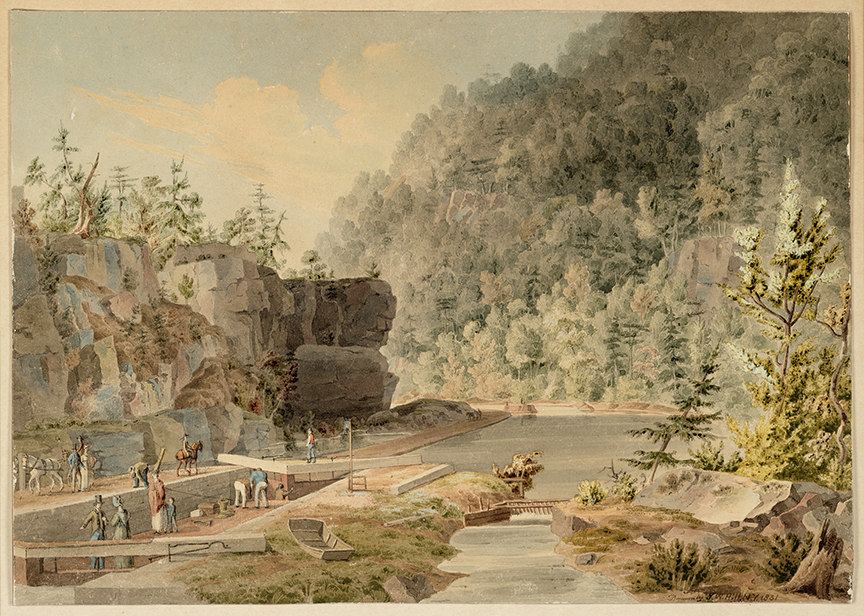
Little Falls was one of the most picturesque locations on the original Erie Canal, and its iconic aqueduct and dramatic Mohawk River gorge became favorite subjects for artists.
One of those artists was the young John William Hill, who had emigrated from England with his parents in 1819. Early on he worked in his father’s New York City shop, mastering the process of aquatint engraving. Between 1829 and 1831 he traveled across the state, painting watercolors to be used as studies for a portfolio of engravings of canal scenes. The portfolio was never published, but the surviving paintings — executed when he was about 20 years old — provide some of our most detailed views of the early canal.
Hill created his landscapes using the techniques of a miniaturist, building them with layer upon layer of tiny stipples. His precise brush captured details not found in other contemporary images.
Among other things, his watercolors depict packet boats and scows, the Little Falls aqueduct and, in the painting shown here, one of the five locks that lifted the canal around the rapids at Little Falls.
In the painting several passengers, including a woman with a small child, watch from the cabin roof of their packet boat while it is being locked. A tandem-rigged team of horses exits the left side of the frame on the towpath behind the boat, indicating that the packet is heading west. The boat is being lifted by the rising water level in the lock.
Near the bow of the packet, a male passenger appears to be describing the operation of the lock gates to his female companion. (Apparently, mansplaining was a thing even in 1831.) To the right is a rarely shown detail — the bypass flume, a ditch that diverted excess water around the lock. A rock-filled wooden crib near the flume’s outlet breaks the fall of the water as it reenters the canal.
In the background, the stony face of Profile Rock — a feature that survives to this day — mutely takes in the scene.
Several details from this painting, including the bypass flume and crib, are examples of the things that can be gleaned from contemporary paintings, sketches, and engravings. Along with other details, they will make their way into the Little Falls digital landscape.
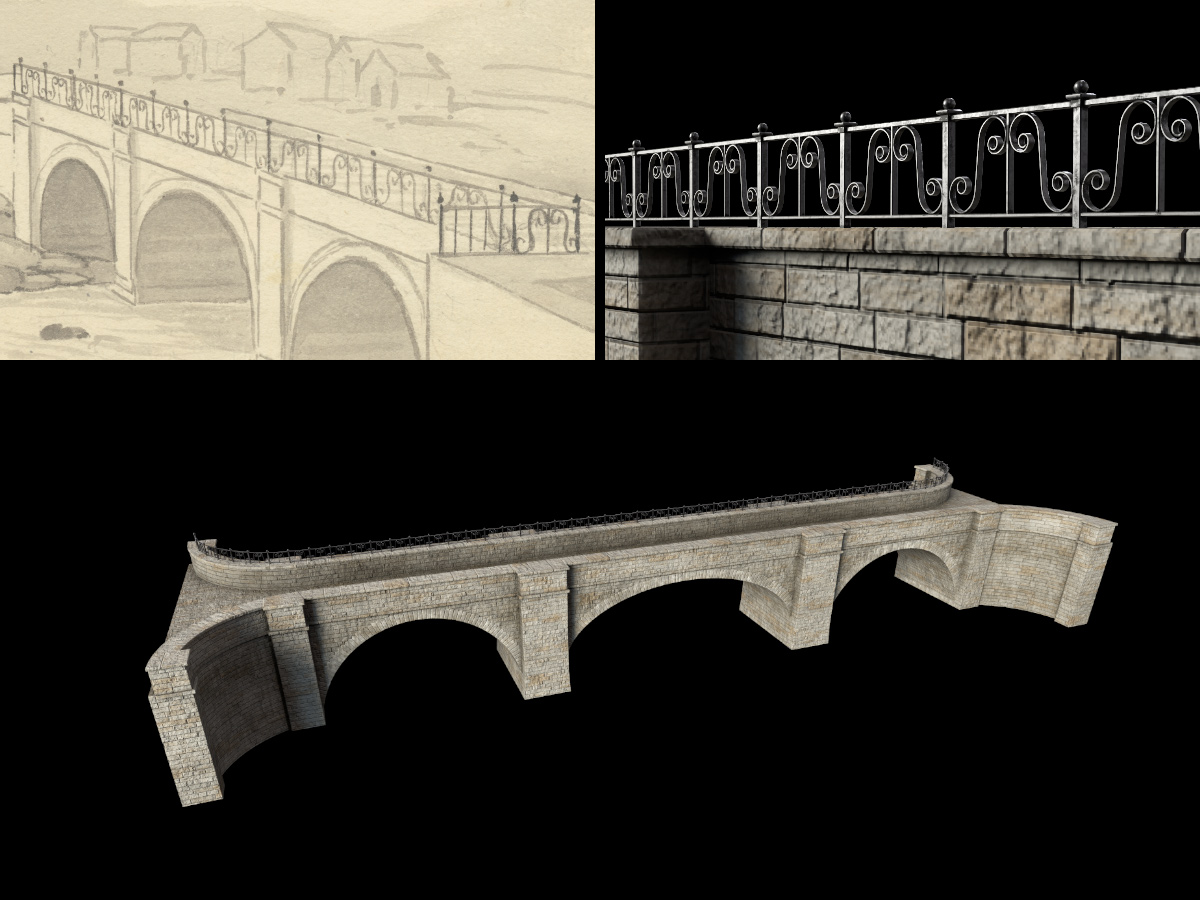
As mentioned before, the aqueduct at Little Falls was constructed in eight short weeks in late 1822 by contractor Ara Broadwell, who was paid $45,532.50 that year for this and various other projects near Little Falls. The wrought-iron railing was installed in 1824 at a cost of $1,552.60. The distinctive spiral design is documented in a sketch by John Hopkins Sr. and in J. W. Hill’s painting of the aqueduct, and appears in at least one photograph taken later in the century.
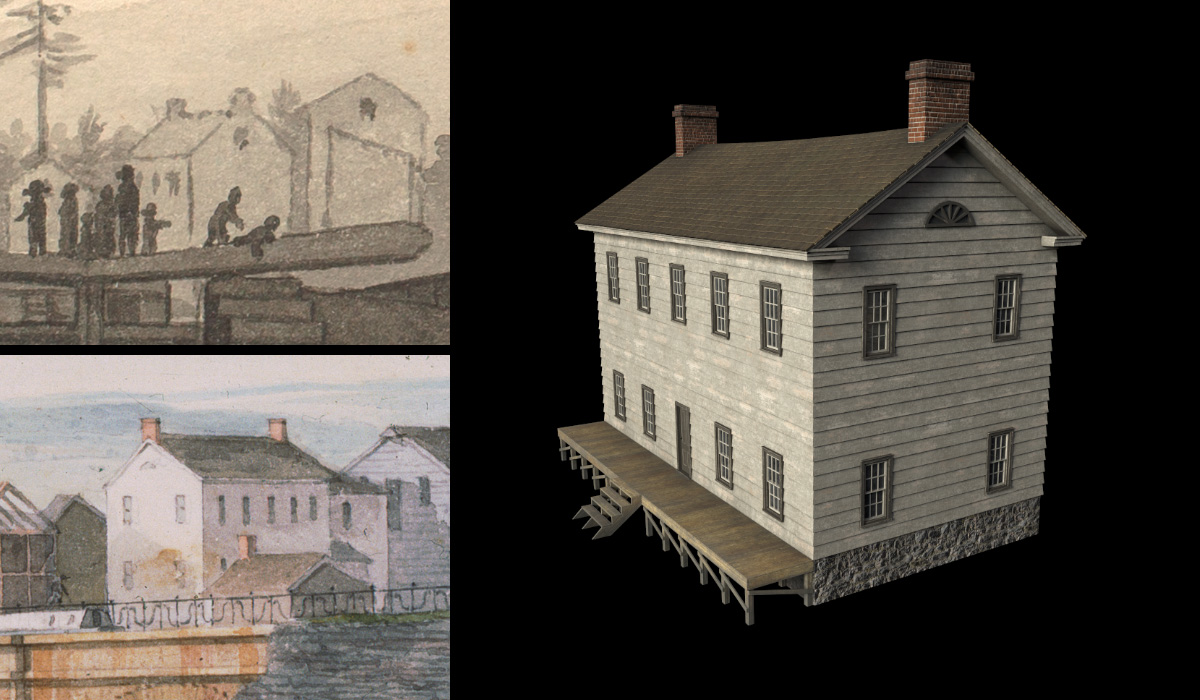
The village of Little Falls began to grow quickly after the canal opened. Comparisons of James Eights’ 1824 engraving, John Hopkins Jr.’s 1825 watercolor, and J. W. Hill’s 1831 watercolor show how quickly new buildings were going up on the south bank of the river. I’m planning to include a handful representing the buildings shown in Hopkins’ sketch. One building in particular seems to appear in all three images — a large, Greek Revival-style structure, possibly a public building like a tavern or hotel.
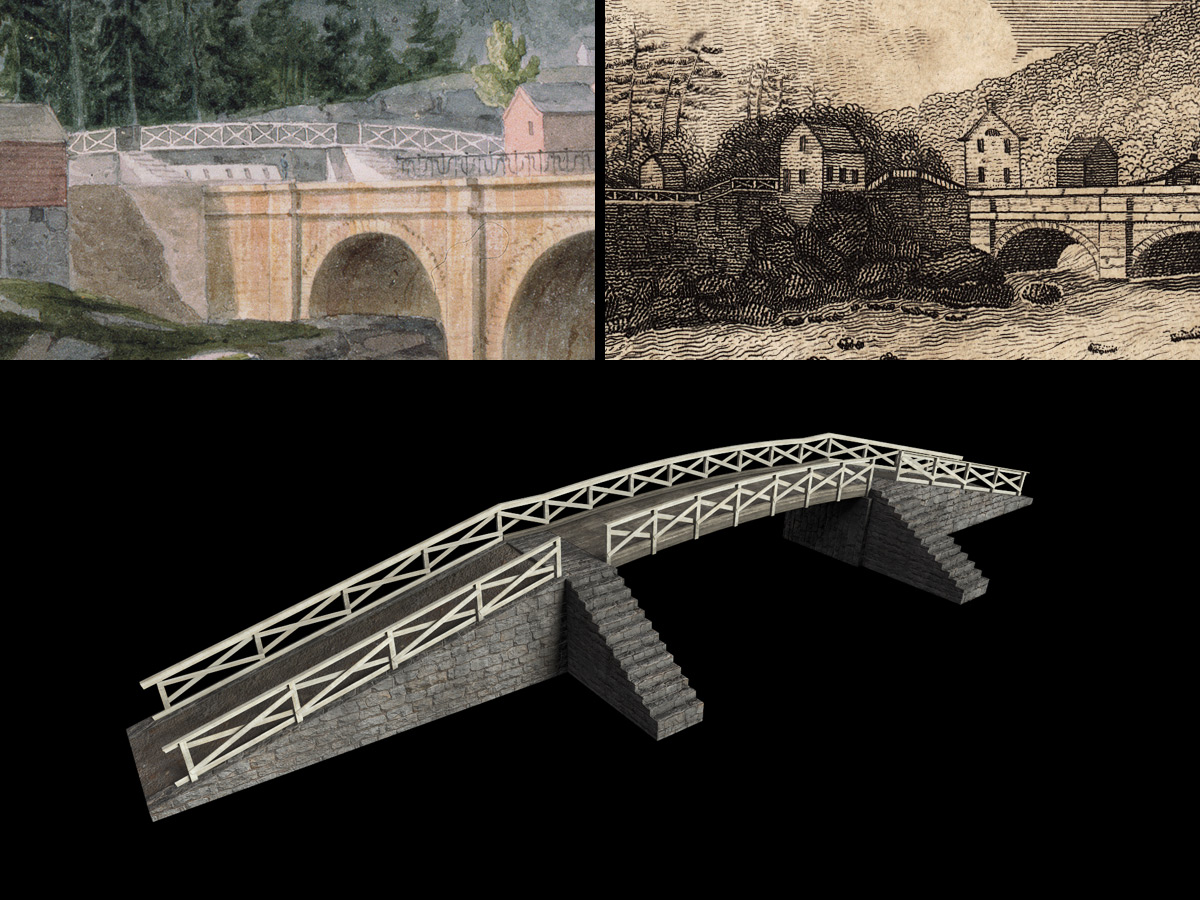
The feeder channel carried across the Mohawk River by the aqueduct cuts across the towpath before it joins the Erie Canal. A bridge was needed, primarily for the animal teams that towed the boats, but also (judging from the stairs shown in J. W. Hill’s watercolor) for pedestrians. The bridge was constructed in 1822 by contractor John J. Walrath, who was paid $671.54 for building it along with two waste weirs. It won’t be a prominent feature in the digital scene, but it will nice to include it.
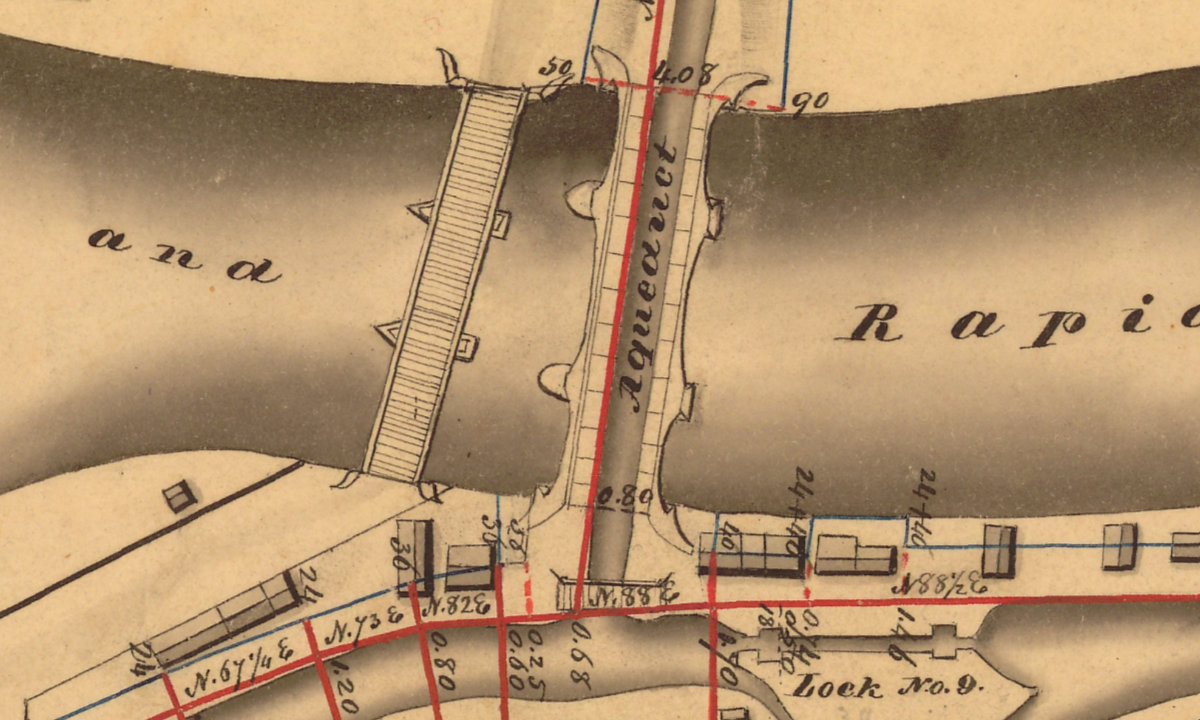
Speaking of bridges, historical accounts dating back to at least 1792 mention a road bridge across the Mohawk River at Little Falls. The bridge — or a successor — is shown on the Holmes Hutchinson 1830–1831 survey map. It almost certainly was built of wood. But I haven’t been able to find a contemporary image that shows what it looked like.
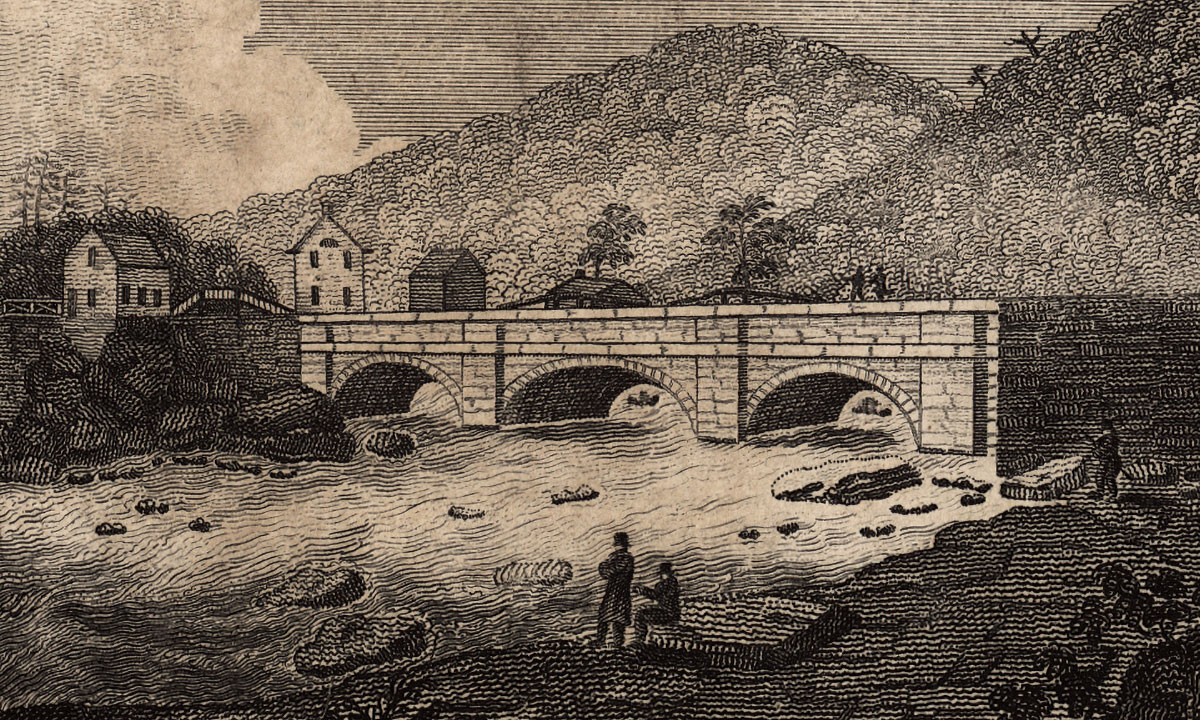
James Eights’ 1824 engraving offers a tantalizing clue. If you look closely, you can see two wooden arches rising behind the aqueduct — right where the bridge would be. Perhaps these are part of the bridge’s superstructure.
Because of the camera angle, any model of the bridge would be obstructed by the aqueduct in the digital scene. (As it is in Eights’ engraving.) The plan for now is to omit it entirely. But we’ll see.

